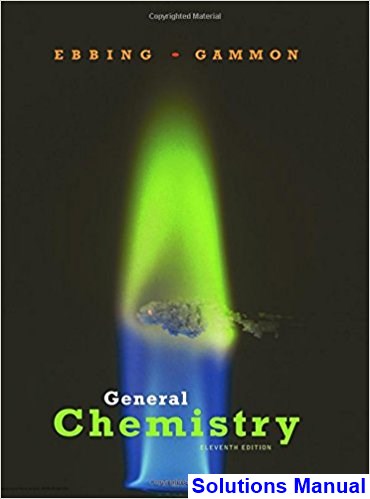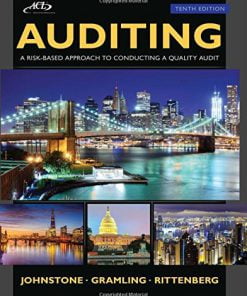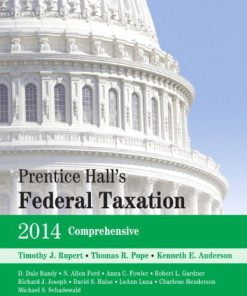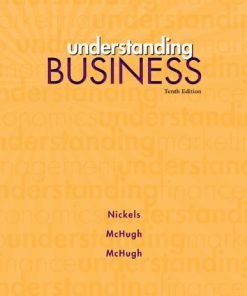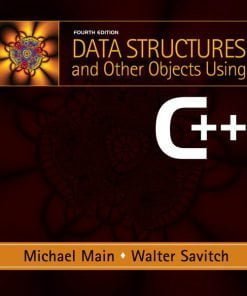General Chemistry 11th Edition Ebbing Solutions Manual
$55.00 Original price was: $55.00.$29.99Current price is: $29.99.
General Chemistry 11th Edition Ebbing Solutions Manual
This is completed downloadable of General Chemistry 11th Edition Ebbing Solutions Manual
Product Details:
- ISBN-10 : 1305580346
- ISBN-13 : 978-1305580343
- Author: Ebbing
Table of Content:
- Ch 1: Chemistry and Measurement
- Ch 1: Contents and Concepts
- 1.1: Modern Chemistry: A Brief Glimpse
- 1.2: Experiment and Explanation
- 1.3: Law of Conservation of Mass
- 1.4: Matter: Physical State and Chemical Composition
- 1.5: Measurement and Significant Figures
- 1.6: SI Units
- 1.7: Derived Units
- 1.8: Units and Dimensional Analysis (Factor-Label Method)
- Ch 1: A Checklist for Review
- Ch 1: Questions and Problems
- Ch 2: Atoms, Molecules, and Ions
- Ch 2: Contents and Concepts
- 2.1: Atomic Theory of Matter
- 2.2: The Structure of the Atom
- 2.3: Nuclear Structure; Isotopes
- 2.4: Atomic Weights
- 2.5: Periodic Table of the Elements
- 2.6: Chemical Formulas; Molecular and Ionic Substances
- 2.7: Organic Compounds
- 2.8: Naming Simple Compounds
- 2.9: Writing Chemical Equations
- 2.10: Balancing Chemical Equations
- Ch 2: A Checklist for Review
- Ch 2: Questions and Problems
- Ch 3: Calculations with Chemical Formulas and Equations
- Ch 3: Contents and Concepts
- 3.1: Molecular Weight and Formula Weight
- 3.2: The Mole Concept
- 3.3: Mass Percentages from the Formula
- 3.4: Elemental Analysis: Percentages of Carbon, Hydrogen, and Oxygen
- 3.5: Determining Formulas
- 3.6: Molar Interpretation of a Chemical Equation
- 3.7: Amounts of Substances in a Chemical Reaction
- 3.8: Limiting Reactant; Theoretical and Percentage Yields
- Ch 3: A Checklist for Review
- Ch 3: Questions and Problems
- Ch 4: Chemical Reactions
- Ch 4: Contents and Concepts
- 4.1: Ionic Theory of Solutions and Solubility Rules
- 4.2: Molecular and Ionic Equations
- 4.3: Precipitation Reactions
- 4.4: Acid–Base Reactions
- 4.5: Oxidation–Reduction Reactions
- 4.6: Balancing Simple Oxidation–Reduction Equations
- 4.7: Molar Concentration
- 4.8: Diluting Solutions
- 4.9: Gravimetric Analysis
- 4.10: Volumetric Analysis
- Ch 4: A Checklist for Review
- Ch 4: Questions and Problems
- Ch 5: The Gaseous State
- Ch 5: Contents and Concepts
- 5.1: Gas Pressure and Its Measurement
- 5.2: Empirical Gas Laws
- 5.3: The Ideal Gas Law
- 5.4: Stoichiometry Problems Involving Gas Volumes
- 5.5: Gas Mixtures; Law of Partial Pressures
- 5.6: Kinetic Theory of an Ideal Gas
- 5.7: Molecular Speeds; Diffusion and Effusion
- 5.8: Real Gases
- Ch 5: A Checklist for Review
- Ch 5: Questions and Problems
- Ch 6: Thermochemistry
- Ch 6: Contents and Concepts
- 6.1: Energy and Its Units
- 6.2: First Law of Thermodynamics; Work and Heat
- 6.3: Heat of Reaction; Enthalpy of Reaction
- 6.4: Thermochemical Equations
- 6.5: Applying Stoichiometry to Heats of Reaction
- 6.6: Measuring Heats of Reaction
- 6.7: Hess’s Law
- 6.8: Standard Enthalpies of Formation
- 6.9: Fuels—Foods, Commercial Fuels, and Rocket Fuels
- Ch 6: A Checklist for Review
- Ch 6: Questions and Problems
- Ch 7: Quantum Theory of the Atom
- Ch 7: Contents and Concepts
- 7.1: The Wave Nature of Light
- 7.2: Quantum Effects and Photons
- 7.3: The Bohr Theory of the Hydrogen Atom
- 7.4: Quantum Mechanics
- 7.5: Quantum Numbers and Atomic Orbitals
- Ch 7: A Checklist for Review
- Ch 7: Questions and Problems
- Ch 8: Electron Configurations and Periodicity
- 8.1 Electron Spin and the Pauli Exclusion Principle
- Ch 8: Contents and Concepts
- 8.2: Building-Up Principle and the Periodic Table
- 8.3: Writing Electron Configurations Using the Periodic Table
- 8.4: Orbital Diagrams of Atoms; Hund’s Rule
- 8.5: Mendeleev’s Predictions from the Periodic Table
- 8.6: Some Periodic Properties
- 8.7: Periodicity in the Main-Group Elements
- Ch 8: A Checklist for Review
- Ch 8: Questions and Problems
- Ch 9: Ionic and Covalent Bonding
- Ch 9: Contents and Concepts
- 9.1: Describing Ionic Bonds
- 9.2: Electron Configurations of Ions
- 9.3: Ionic Radii
- 9.4: Describing Covalent Bonds
- 9.5: Polar Covalent Bonds; Electronegativity
- 9.6: Writing Lewis Electron-Dot Formulas
- 9.7: Delocalized Bonding: Resonance
- 9.8: Exceptions to the Octet Rule
- 9.9: Formal Charge and Lewis Formulas
- 9.10: Bond Length and Bond Order
- 9.11: Bond Enthalpy
- Ch 9: A Checklist for Review
- Ch 9: Questions and Problems
- Ch 10: Molecular Geometry and Chemical Bonding Theory
- Ch 10: Contents and Concepts
- 10.1: The Valence-Shell Electron-Pair Repulsion (VSEPR) Model
- 10.2: Dipole Moment and Molecular Geometry
- 10.3: Valence Bond Theory
- 10.4: Description of Multiple Bonding
- 10.5: Principles of Molecular Orbital Theory
- 10.6: Electron Configurations of Diatomic Molecules of the Second-Period Elements
- 10.7: Molecular Orbitals and Delocalized Bonding
- Ch 10: A Checklist for Review
- Ch 10: Questions and Problems
- Ch 11: States of Matter; Liquids and Solids
- Ch 11: Contents and Concepts
- 11.1: Comparison of Gases, Liquids, and Solids
- 11.2: Phase Transitions
- 11.3: Phase Diagrams
- 11.4: Properties of Liquids; Surface Tension and Viscosity
- 11.5: Intermolecular Forces; Explaining Liquid Properties
- 11.6: Classification of Solids by Type of Attraction of Units
- 11.7: Crystalline Solids; Crystal Lattices and Unit Cells
- 11.8: Structures of Some Crystalline Solids
- 11.9: Calculations Involving Unit-Cell Dimensions
- 11.10: Determining Crystal Structure by X-Ray Diffraction
- Ch 11: A Checklist for Review
- Ch 11: Questions and Problems
- Ch 12: Solutions
- Ch 12: Contents and Concepts
- 12.1: Types of Solutions
- 12.2: Solubility and the Solution Process
- 12.3: Effects of Temperature and Pressure on Solubility
- 12.4: Ways of Expressing Concentration
- 12.5: Vapor Pressure of a Solution
- 12.6: Boiling-Point Elevation and Freezing-Point Depression
- 12.7: Osmosis
- 12.8: Colligative Properties of Ionic Solutions
- 12.9: Colloids
- Ch 12: A Checklist for Review
- Ch 12: Questions and Problems
- Ch 13: Rates of Reaction
- Ch 13: Contents and Concepts
- 13.1: Definition of Reaction Rate
- 13.2: Experimental Determination of Rate
- 13.3: Dependence of Rate on Concentration
- 13.4: Change of Concentration with Time
- 13.5: Temperature and Rate; Collision and Transition-State Theories
- 13.6: Arrhenius Equation
- 13.7: Elementary Reactions
- 13.8: The Rate Law and the Mechanism
- 13.9: Catalysis
- Ch 13: A Checklist for Review
- Ch 13: Questions and Problems
- Ch 14: Chemical Equilibrium
- Ch 14: Contents and Concepts
- 14.1: Chemical Equilibrium—A Dynamic Equilibrium
- 14.2: The Equilibrium Constant
- 14.3: Heterogeneous Equilibria; Solvents in Homogeneous Equilibria
- 14.4: Qualitatively Interpreting the Equilibrium Constant
- 14.5: Predicting the Direction of Reaction
- 14.6: Calculating Equilibrium Concentrations
- 14.7: Removing Products or Adding Reactants
- 14.8: Changing the Pressure and Temperature
- 14.9: Effect of a Catalyst
- Ch 14: A Checklist for Review
- Ch 14: Questions and Problems
- Ch 15: Acids and Bases
- Ch 15: Contents and Concepts
- 15.1: Arrhenius Concept of Acids and Bases
- 15.2: Brønsted–Lowry Concept of Acids and Bases
- 15.3: Lewis Concept of Acids and Bases
- 15.4: Relative Strengths of Acids and Bases
- 15.5: Molecular Structure and Acid Strength
- 15.6: Autoionization of Water
- 15.7: Solutions of a Strong Acid or Base
- 15.8: The pH of a Solution
- Ch 15: A Checklist for Review
- Ch 15: Questions and Problems
- Ch 16: Acid–Base Equilibria
- Ch 16: Contents and Concepts
- 16.1: Acid-Ionization Equilibria
- 16.2: Polyprotic Acids
- 16.3: Base-Ionization Equilibria
- 16.4: Acid–Base Properties of Salt Solutions
- 16.5: Common-Ion Effect
- 16.6: Buffers
- 16.7: Acid–Base Titration Curves
- Ch 16: A Checklist for Review
- Ch 16: Questions and Problems
- Ch 17: Solubility and Complex-Ion Equilibria
- Ch 17: Contents and Concepts
- 17.1: The Solubility Product Constant
- 17.2: Solubility and the Common-Ion Effect
- 17.3: Precipitation Calculations
- 17.4: Effect of pH on Solubility
- 17.5: Complex-Ion Formation
- 17.6: Complex Ions and Solubility
- 17.7: Qualitative Analysis of Metal Ions
- Ch 17: A Checklist for Review
- Ch 17: Questions and Problems
- Ch 18: Thermodynamics and Equilibrium
- Ch 18: Contents and Concepts
- 18.1: First Law of Thermodynamics: A Review
- 18.2: Entropy and the Second Law of Thermodynamics
- 18.3: Standard Entropies and the Third Law of Thermodynamics
- 18.4: Free Energy and Spontaneity
- 18.5: Interpretation of Free Energy
- 18.6: Relating ΔG° to the Equilibrium Constant
- 18.7: Change of Free Energy with Temperature
- Ch 18: A Checklist for Review
- Ch 18: Questions and Problems
- Ch 19: Electrochemistry
- Ch 19: Contents and Concepts
- 19.1: Balancing Oxidation–Reduction Reactions in Acidic and Basic Solutions
- 19.2: Construction of Voltaic Cells
- 19.3: Notation for Voltaic Cells
- 19.4: Cell Potential
- 19.5: Standard Cell Potentials and Standard Electrode Potentials
- 19.6: Equilibrium Constants from Cell Potentials
- 19.7: Dependence of Cell Potential on Concentration
- 19.8: Some Commercial Voltaic Cells
- 19.9: Electrolysis of Molten Salts
- 19.10: Aqueous Electrolysis
- 19.11: Stoichiometry of Electrolysis
- Ch 19: A Checklist for Review
- Ch 19: Questions and Problems
- Ch 20: Nuclear Chemistry
- Ch 20: Contents and Concepts
- 20.1: Radioactivity
- 20.2: Nuclear Bombardment Reactions
- 20.3: Radiations and Matter: Detection and Biological Effects
- 20.4: Rate of Radioactive Decay
- 20.5: Applications of Radioactive Isotopes
- 20.6: Mass–Energy Calculations
- 20.7: Nuclear Fission and Nuclear Fusion
- Ch 20: A Checklist for Review
- Ch 20: Questions and Problems
- Ch 21: Chemistry of the Main-Group Elements
- Ch 21: Contents and Concepts
- 21.1: General Observations About the Main-Group Elements
- 21.2: Metals: Characteristics and Production
- 21.3: Bonding in Metals
- 21.4: Group 1A: The Alkali Metals
- 21.5: Group 2A: The Alkaline Earth Metals
- 21.6: Group 3A and Group 4A Metals
- 21.7: Hydrogen
- 21.8: Group 4A: The Carbon Family
- 21.9: Group 5A: Nitrogen and the Phosphorus Family
- 21.10: Group 6A: Oxygen and the Sulfur Family
- 21.11: Group 7A: The Halogens
- 21.12: Group 8A: The Noble Gases
- Ch 21: A Checklist for Review
- Ch 21: Questions and Problems
- Ch 22: The Transition Elements and Coordination Compounds
- Ch 22: Contents and Concepts
- 22.1: Periodic Trends in the Transition Elements
- 22.2: The Chemistry of Two Transition Elements
- 22.3: Formation and Structure of Complexes
- 22.4: Naming Coordination Compounds
- 22.5: Structure and Isomerism in Coordination Compounds
- 22.6: Valence Bond Theory of Complexes
- 22.7: Crystal Field Theory
- Ch 22: A Checklist for Review
- Ch 22: Questions and Problems
- Ch 23: Organic Chemistry
- Ch 23: Contents and Concepts
- 23.1: The Bonding of Carbon
- 23.2: Alkanes and Cycloalkanes
- 23.3: Alkenes and Alkynes
- 23.4: Aromatic Hydrocarbons
- 23.5: Naming Hydrocarbons
- 23.6: Organic Compounds Containing Oxygen
- 23.7: Organic Compounds Containing Nitrogen
- Ch 23: A Checklist for Review
- Ch 23: Questions and Problems
- Ch 24: Polymer Materials: Synthetic and Biological
- Ch 24: Contents and Concepts
- 24.1: Synthesis of Organic Polymers
- 24.2: Electrically Conducting Polymers
- 24.3: Proteins
- 24.4: Nucleic Acids
- Ch 24: A Checklist for Review
- Ch 24: Questions and Problems
- Appendixes
- Appendix A: Mathematical Skills
- Appendix B: Vapor Pressure of Water at Various Temperatures
- Appendix C: Thermodynamic Quantities for Substances and Ions at 25°C
- Appendix D: Electron Configurations of Atoms in the Ground State
- Appendix E: Acid-Ionization Constants at 25°C
- Appendix F: Base-Ionization Constants at 25°C
- Appendix G: Solubility Product Constants at 25°C
- Appendix H: Formation Constants of Complex Ions at 25°C
- Appendix I: Standard Electrode (Reduction) Potentials in Aqueous Solution at 25°C
- Answers to Exercises
- Answers to Concept Checks
- Answer Section Selected Odd Problems
- Glossary
- Index
People Also Search:
general chemistry 11th edition
general chemistry 11th edition answer key
general chemistry 11th edition solution manual pdf
Related products
Solution Manual
Solution Manual for Introduction to Robotics Mechanics and Control 3rd Edition by Craig
Solution Manual
Auditing A Risk Based-Approach to Conducting a Quality Audit Johnstone 10th Edition Solutions Manual
Solution Manual
Prentice Hall’s Federal Taxation 2014 Comprehensive Rupert 27th Edition Solutions Manual
Solution Manual
Solution Manual
Understanding Business Nickels 10th Edition Solutions Manual
Solution Manual
Solution Manual for Data Structures and Other Objects Using C++, 4/E Michael Main, Walter Savitch
Solution Manual




